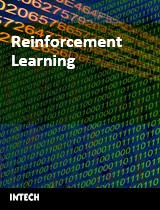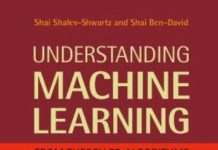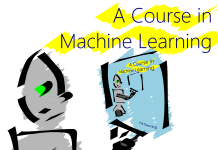| Book Name: | Reinforcement Learning |
| Category: | Machine Learning |
| Free Download: | Available |
Reinforcement Learning

Book Description:
Brains rule the world, and brain-like computing is increasingly used in computers and electronic devices. Brain-like computing is about processing and interpreting data or directly presenting and executing actions. Learning is a very important aspect. This book is about reinforcement learning, which is about taking action to achieve a goal. There are two other learning paradigms. Supervised learning was initially successful in prediction and classification tasks, but it’s not like the brain. Unsupervised learning is about understanding the world through passive mapping or grouping of data according to some order principles and is associated with the cerebral cortex. In reinforcement learning, an agent learns by trial and error to perform an action to receive a reward, creating a powerful method for developing targeted action strategies. It is predominantly associated with the basal ganglia of the brain.
The first 11 chapters of this book, Theory, describe and expand the scope of reinforcement learning. The remaining 11 chapters, Applications, show that there is already extensive use in numerous fields. Reinforcement learning can tackle control tasks that are too complex for traditional, manually designed, learning-free controllers. As learning computers can deal with technical complexities, the task of human operators remains to specify goals at ever higher levels.
This book shows that reinforcement learning is a very dynamic area in terms of theory and applications and will stimulate and encourage further research in this field. We would like to thank all contributors to this book for their research and commitment.
Summary of Theory:
Chapters 1 and 2 make a link to supervised and unsupervised learning, respectively, considering reinforcement learning as a prediction problem, and chapter 3 analyzes fuzzy control with a reinforcement-based genetic algorithm. The boost algorithms are modified in Chapter 4 for future quantum and parallel computing, and in Chapter 5 for a more general class of state-action spaces, described by the grammars. So follow the biological points of view; in Chapter 6, how reinforcement learning occurs at the single neuron level considering the interaction between a spatio-temporal learning rule and Hebrew learning, and in a global view of the brain in Chapter 7, unsupervised learning it is represented as a means of preprocessing and data arrays to enhance algorithms. A table presents a ready-to-implement description of standard reinforcement learning algorithms. The following chapters consider multi-agent systems where a single agent has only a partial view of the entire system. Multiple agents can collaborate on a common goal, as discussed in Chapter 8, or the rewards can be individual but interdependent, as in the game, as discussed in Chapters 9, 10 and 11.
Application summary:
Chapter 12 continues with gaming applications where a medium-sized robot learns a strategic soccer move. A dialog manager for human-machine dialogues in Chapter 13 interacts with humans using communication queries and databases, depending on the interaction strategies that govern Markov’s decision-making processes. Chapters 14, 15, 16 and 17 address control problems that may be typical of classic control methods such as PID controllers and manual rules. However, traditional methods fail if systems are too complex, vary over time, if state knowledge is inaccurate, or if there are multiple objectives. These chapters provide examples of computer applications that are addressed only with reinforcement learning, such as improving water allocation, environmental control of buildings, chemical treatment, and industrial process control. Booster-controlled systems can continue learning during operation. The next three chapters are about route optimization. In Chapter 18, Internet routers explore various links to find the most optimal routes to a destination address. Chapter 19 deals with the optimization of a w.r.t. both time and distance. Chapter 20 proposes an atypical application of path optimization: a path from a given model to a target model provides a measure of distance. Therefore, an unclassified medical image can be classified based on whether the path from it is the shortest to an image of healthy or unhealthy tissue, especially considering the classification of lung nodules using 3D geometric measurements extracted from images of computed tomography (CT) scan of the lung injury. Chapter 21 introduces a physician decision support system for diagnosis and treatment, including a knowledge base server. In Chapter 22, a reinforcement learning sub-module improves the efficiency for exchanging messages in an air traffic management decision support system.
Reinforcement Learning. Theory and Applications
Author(s): Cornelius Weber, Mark Elshaw, Norbert Michael Mayer (editors)
Publisher: I-Tech Education and Publishing, Year: 2008
ISBN: 3902613149,9783902613141









![[PDF] Draw Buildings and Cities in 15 Minutes Draw Buildings and Cities in 15 Minutes pdf](https://www.freepdfbook.com/wp-content/uploads/2021/06/Draw-Buildings-and-Cities-in-15-Minutes-218x150.jpg)








![[PDF] Digital Image Processing An Algorithmic Introduction Using Java Digital Image Processing An Algorithmic Introduction Using Java](https://www.freepdfbook.com/wp-content/uploads/2022/06/Digital-Image-Processing-An-Algorithmic-Introduction-Using-Java.jpg)




![[PDF] 43 Years JEE ADVANCED + JEE MAIN Chapterwise & Topicwise Solved Papers 43 Years JEE ADVANCED (1978-2020) + JEE MAIN Chapterwise & Topicwise Solved Papers Physics PDF](https://www.freepdfbook.com/wp-content/uploads/2022/03/43-Years-JEE-ADVANCED-1978-2020.jpg)

![[PDF] Problems in Physical Chemistry for JEE (Main & Advanced) Problems in Physical Chemistry for JEE (Main & Advanced) Free PDF Book Download](https://www.freepdfbook.com/wp-content/uploads/2022/03/Problems-in-Physical-Chemistry-for-JEE-Main-Advanced.jpg)
![[PDF] Engineering Physics (McGraw Hill)](https://www.freepdfbook.com/wp-content/uploads/2021/05/bafc8c2685bb6823a9c56134f7fba5df.jpeg)

![[PDF] Engineering Chemistry By Shashi Chawla](https://www.freepdfbook.com/wp-content/uploads/2022/05/Theory-And-Practicals-of-Engineering-Chemistry-By-Shashi-Chawla-free-pdf-book.jpeg)
![[PDF] Chemistry: An Introduction to Organic, Inorganic & Physical Chemistry Chemistry: An Introduction to Organic, Inorganic & Physical Chemistry](https://www.freepdfbook.com/wp-content/uploads/2022/04/Chemistry-An-Introduction-to-Organic-Inorganic-Physical-Chemistry.jpg)
![[PDF] Essentials of Physical Chemistry Essentials of Physical Chemistry Free PDF Book by Bahl](https://www.freepdfbook.com/wp-content/uploads/2022/04/Essentials-of-Physical-Chemistry-bahl.jpg)
![[PDF] Biological control of plant-parasitic nematodes: soil ecosystem management in sustainable agriculture Biological control of plant-parasitic nematodes: soil ecosystem management in sustainable agriculture](https://www.freepdfbook.com/wp-content/uploads/2022/05/Biological-control-of-plant-parasitic-nematodes-soil-ecosystem-management-in-sustainable-agriculture.jpg)
![[PDF] Human Anatomy: Color Atlas and Textbook Human Anatomy: Color Atlas and Textbook Free PDF Book](https://www.freepdfbook.com/wp-content/uploads/2022/05/Human-Anatomy-Color-Atlas-and-Textbook.jpg)
![[PDF] Concepts of Biology Book [Free Download]](https://www.freepdfbook.com/wp-content/uploads/2022/05/Concepts-of-Biology.jpg)
![[PDF] Essentials of Biology [Free Download] Essentials of Biology Free PDF BOok Download](https://www.freepdfbook.com/wp-content/uploads/2022/05/Essentials-of-Biology-Free-PDF-Book-Downlaod.jpg)
![[PDF] Human Biology Book [Free Download]](https://www.freepdfbook.com/wp-content/uploads/2022/05/PDF-Human-Biology-Book-Free-Download.jpg)


